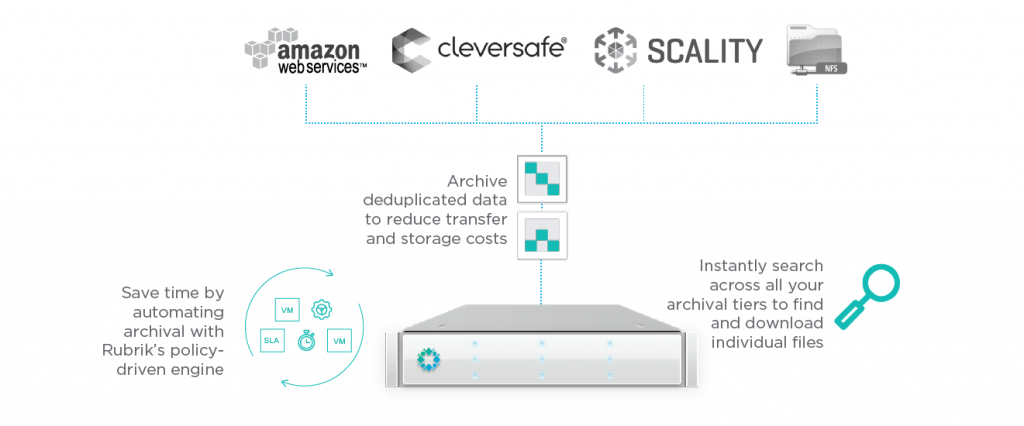A few weeks ago, I paid a visit to Terry Young, the man behind the scenes that keeps infrastructure running at Castilleja School. We met in November to discuss how Castilleja used Rubrik to solve recovery challenges and re-purpose backup data for testing. This time, our conversation focused on how Castilleja has been using Rubrik to archive data to AWS S3. As a result, Terry has wiped out tape management complexity and created a disaster recovery insurance plan for Castilleja.
Mapping Business Objectives to Cloud Services
In order to smoothly transition to public cloud, Terry segmented workloads by size, criticality of data, and recovery time objectives. RTOs differ when you’re recovering 4TB from the Brik vs. from the cloud. In addition, Terry defined a new retention policy – everything was kept on-premises for 3 days and anything beyond 3-5 days was archived to the cloud. Archiving starts at midnight to 6 am to not coincide with business hours.
Significant Time Savings from Easy Recoveries
As Chris mentioned in Part 1, the challenge of public cloud is ensuring that data can be pulled down into an on-premises location without breaking the bank and recovery time/point objectives. This is where Rubrik works its magic. When Rubrik manages your data, it keeps a record of the metadata that is quickly accessible without data rehydration. You can locate VMs and files instantly with Google-like search. Just type a few letters into Rubrik’s predictive search engine and you’ll get served results instantly. It doesn’t matter where your data is stored—in your Brik, in the public cloud, in another storage tier like NFS or Cleversafe/Scality. Any data managed by Rubrik is searchable and can be extracted at a granular level.

Castilleja has been sending data to AWS S3 since mid-September and has completed multiple VM and file-level restores, such as Apache log files. “Rubrik’s search has generated significant time savings. In one instance, a user was searching to recover a file that was thought to have been saved on the server. Rather than spend hours attempting to locate the file’s whereabouts, I was able to quickly search through the data stored within our Brik and AWS S3 and determined the file was never saved to the server,” says Terry.
Changing the Economics of Cloud Recovery
Although Castilleja is in its early phase of public cloud adoption, Terry estimates his annual bill to be less than $4K for storing 7.6 TB of data in the cloud. “In addition, we’re saving on the amount of time to manage tape and we’re providing an insurance policy by having our data reside in another part of the country in case we were hit by a disaster. If we’re using tape, we’re paying for tape library, media, maintenance, and ongoing annual tape library hardware, additional tape media, offsite tape retention costs, and labor to tightly coordinate all this complexity.” Rubrik’s granular search and extraction capabilities amplifies the savings of using public cloud. It’s free to send data to the cloud, cheap to store data on the cloud, but expensive to recover data from the cloud. Rubrik changes the economics of public cloud recovery. At Castilleja, you’re looking at 3-4x in savings from abandoning traditional tape management in favor of data archival to cloud via Rubrik.
If you’re interested in learning more about data archival and how cloud is the new tape, check out our Data Archival and Object Store Archival data sheets.
